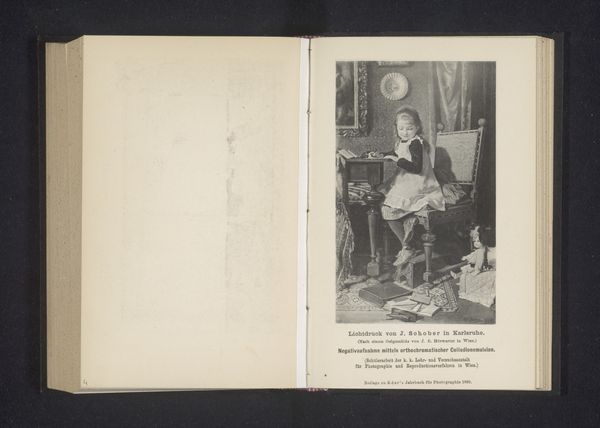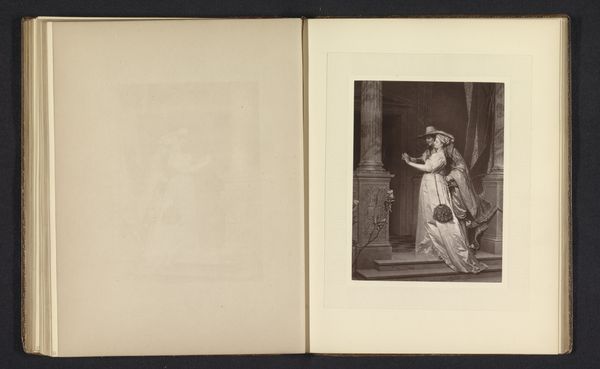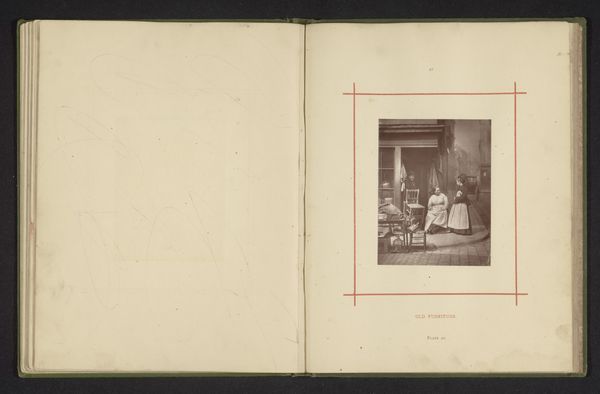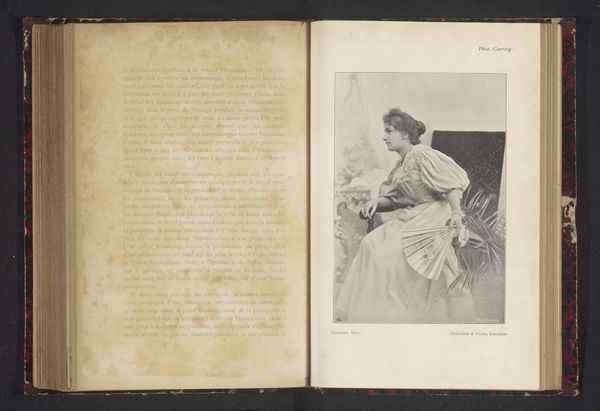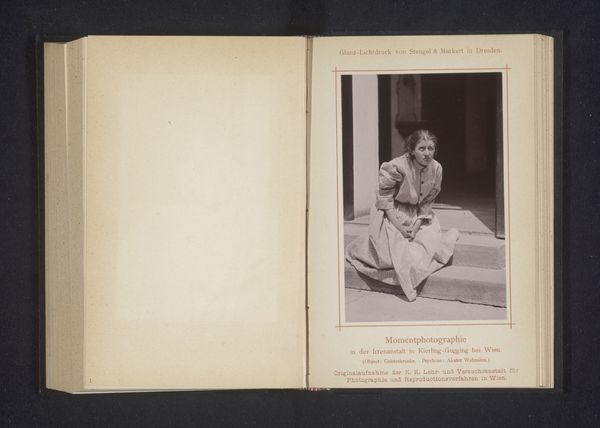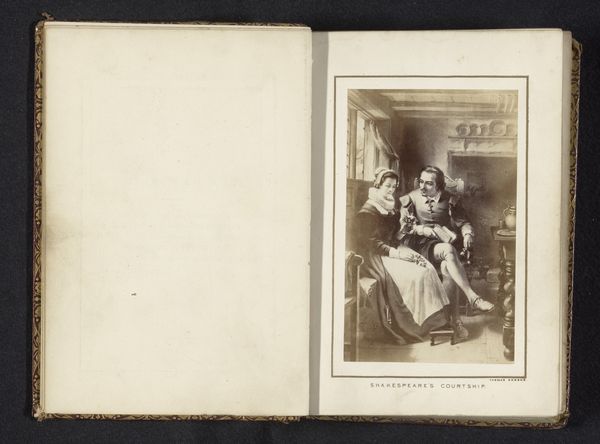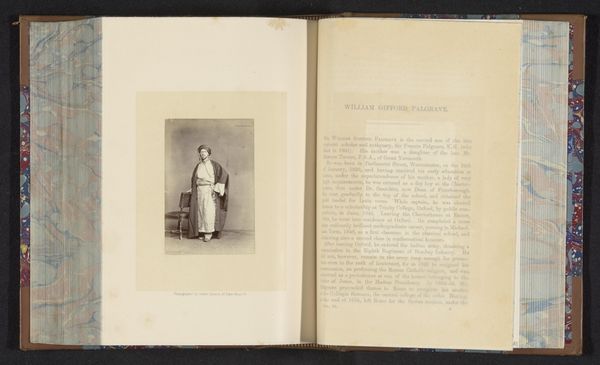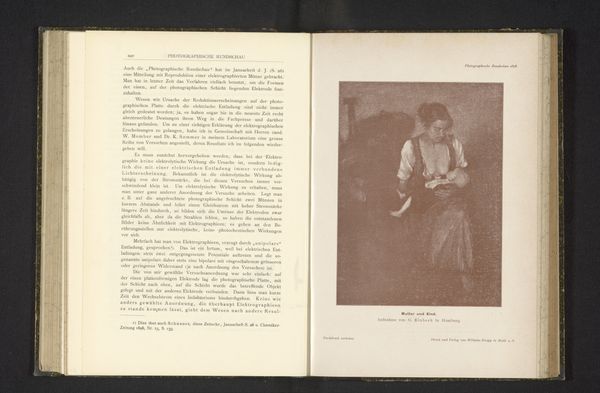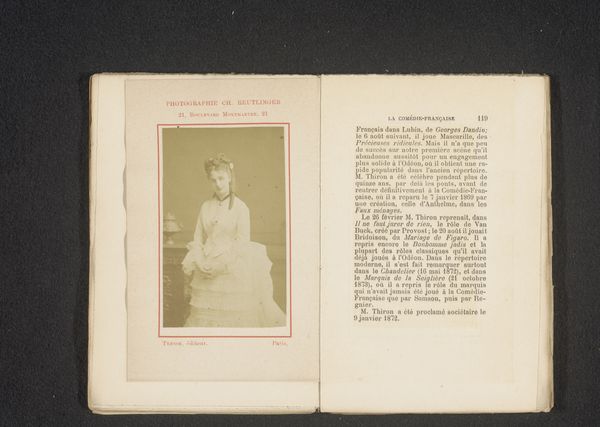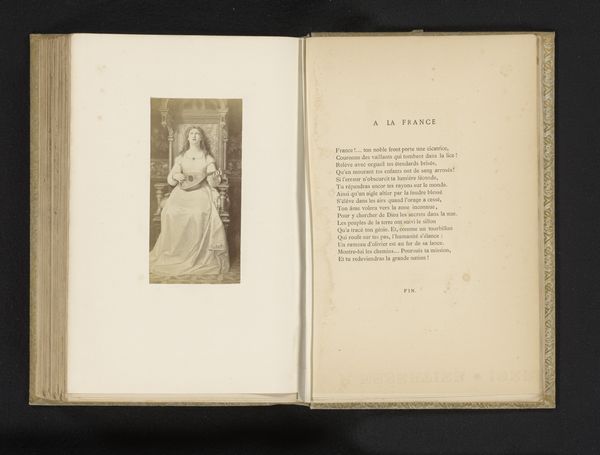
photography, gelatin-silver-print
#
portrait
#
pictorialism
#
photography
#
gelatin-silver-print
#
genre-painting
#
realism
Dimensions: height 141 mm, width 95 mm
Copyright: Rijks Museum: Open Domain
Curator: Looking at "Veranda met een vrouw en twee katten," a gelatin-silver print created before 1891 by K.K. Lehr- und Versuchsanstalt für Photographie, what strikes you most? Editor: The quiet domesticity of it all. There’s an almost stage-managed quality, this posed woman with her cats… the framing device, the open album layout of this object lends a precious intimacy. It's trying to be more than just a snapshot. Curator: It’s fascinating how the choice of gelatin-silver printing speaks to accessibility and reproducibility during that era. Consider the K.K. Lehr- und Versuchsanstalt. They taught photographic techniques but they also functioned within the Austro-Hungarian system, providing skills for an emerging professional class. How do we interpret the subject matter within that framework? Editor: Absolutely. We see the tension between photography’s inherent democratic possibilities and its role as a tool for reinforcing social structures. This could be read as a very deliberate performance of bourgeois leisure, created for, and perhaps by, an expanding middle class eager to emulate established norms of life and taste through imagery. Curator: It really gets me thinking about who held the means of image production. Were these prints destined for personal albums, or circulated more widely as a demonstration of the school’s capabilities? How many laborers touched it? We see evidence of Pictorialism at work to soften and control photography and it gets me wondering if the production method also functioned as social sorting of photography workers and the markets served? Editor: Right, the tension between photography and the artistic establishment. This era wrestled with its place in the hierarchy of art, and a certain carefulness is clearly visible here in that performance. But think about the audience. These pictures are like calling cards, signals within very tight communities. Did the social and political powers really perceive of the arts and its methods as disruptive? How controlled, really, was the arts industry then? It can be overdone how powerful a political tool they thought art was at that time. Curator: I find it particularly affecting how the mundane scene becomes significant through the photographic process. What seems ordinary today—a woman, two cats, a veranda— was, at the time, potentially an affirmation of newly accessible representation and identity. Editor: Indeed. It reveals how constructed these casual snapshots really are and allows us to wonder just what that represented social status or identity means today. Curator: Precisely, seeing this gelatin-silver print is more than looking at a photograph; it is investigating the forces shaping our visual world, even in a seemingly candid scene. Editor: Right, an everyday scene meticulously constructed to play a specific social role and the magic is understanding that game and still enjoying the image.
Comments
No comments
Be the first to comment and join the conversation on the ultimate creative platform.
